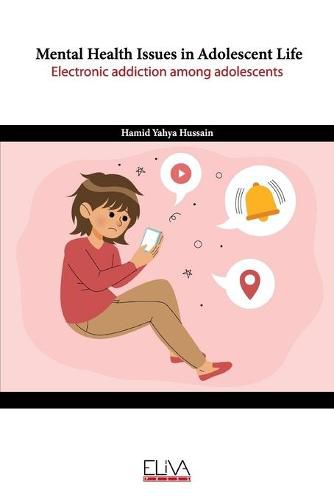Readings Newsletter
Become a Readings Member to make your shopping experience even easier.
Sign in or sign up for free!
You’re not far away from qualifying for FREE standard shipping within Australia
You’ve qualified for FREE standard shipping within Australia
The cart is loading…






Electronic addiction disorder’ is not officially recognized as a disorder by the psychiatric community- yet it was not included in the recently released Diagnostic and Statistical Manual of Mental Disorder V (DSM-V), published by the American Psychiatric Association-an alarming number of people show what appear to be signs of addiction to the digital world. Young people seem especially vulnerable, with case studies highlighting students whose academic performance plummets as they spend more and more time online. Some also suffer health consequences from loss of sleep, as they stay up later and later to chat online, check for social network status updates or to reach the next game levels. There have been a number of tragic cases that have grabbed headlines and heightened the public’s concerns about compulsive Internet use. While it is presumptuous to blame ‘Internet addiction’ for such tragedies-the young people involved may have suffered from other pathologies that led to such negative outcomes-the cases certainly draw attention to the darker side of Internet use. Putting aside for a moment the debate over whether such problems should be framed as ‘Internet addiction disorder’, research into these behaviors has grown dramatically since the mid-1990s, particularly as more and more cases among college students have come to the attention of university health professionals. Besides ‘Internet addiction’, terms such as ‘problematic Internet use’, ‘dysfunctional Internet use’, ‘Internet dependency’, ‘pathological Internet use’, and ‘compulsive Internet use’ have been proposed as ways to describe these behaviors. For this book, I will employ ‘Internet addiction’ because it is widely used in the research, but I will come back to the question of nomenclature.
$9.00 standard shipping within Australia
FREE standard shipping within Australia for orders over $100.00
Express & International shipping calculated at checkout
Electronic addiction disorder’ is not officially recognized as a disorder by the psychiatric community- yet it was not included in the recently released Diagnostic and Statistical Manual of Mental Disorder V (DSM-V), published by the American Psychiatric Association-an alarming number of people show what appear to be signs of addiction to the digital world. Young people seem especially vulnerable, with case studies highlighting students whose academic performance plummets as they spend more and more time online. Some also suffer health consequences from loss of sleep, as they stay up later and later to chat online, check for social network status updates or to reach the next game levels. There have been a number of tragic cases that have grabbed headlines and heightened the public’s concerns about compulsive Internet use. While it is presumptuous to blame ‘Internet addiction’ for such tragedies-the young people involved may have suffered from other pathologies that led to such negative outcomes-the cases certainly draw attention to the darker side of Internet use. Putting aside for a moment the debate over whether such problems should be framed as ‘Internet addiction disorder’, research into these behaviors has grown dramatically since the mid-1990s, particularly as more and more cases among college students have come to the attention of university health professionals. Besides ‘Internet addiction’, terms such as ‘problematic Internet use’, ‘dysfunctional Internet use’, ‘Internet dependency’, ‘pathological Internet use’, and ‘compulsive Internet use’ have been proposed as ways to describe these behaviors. For this book, I will employ ‘Internet addiction’ because it is widely used in the research, but I will come back to the question of nomenclature.